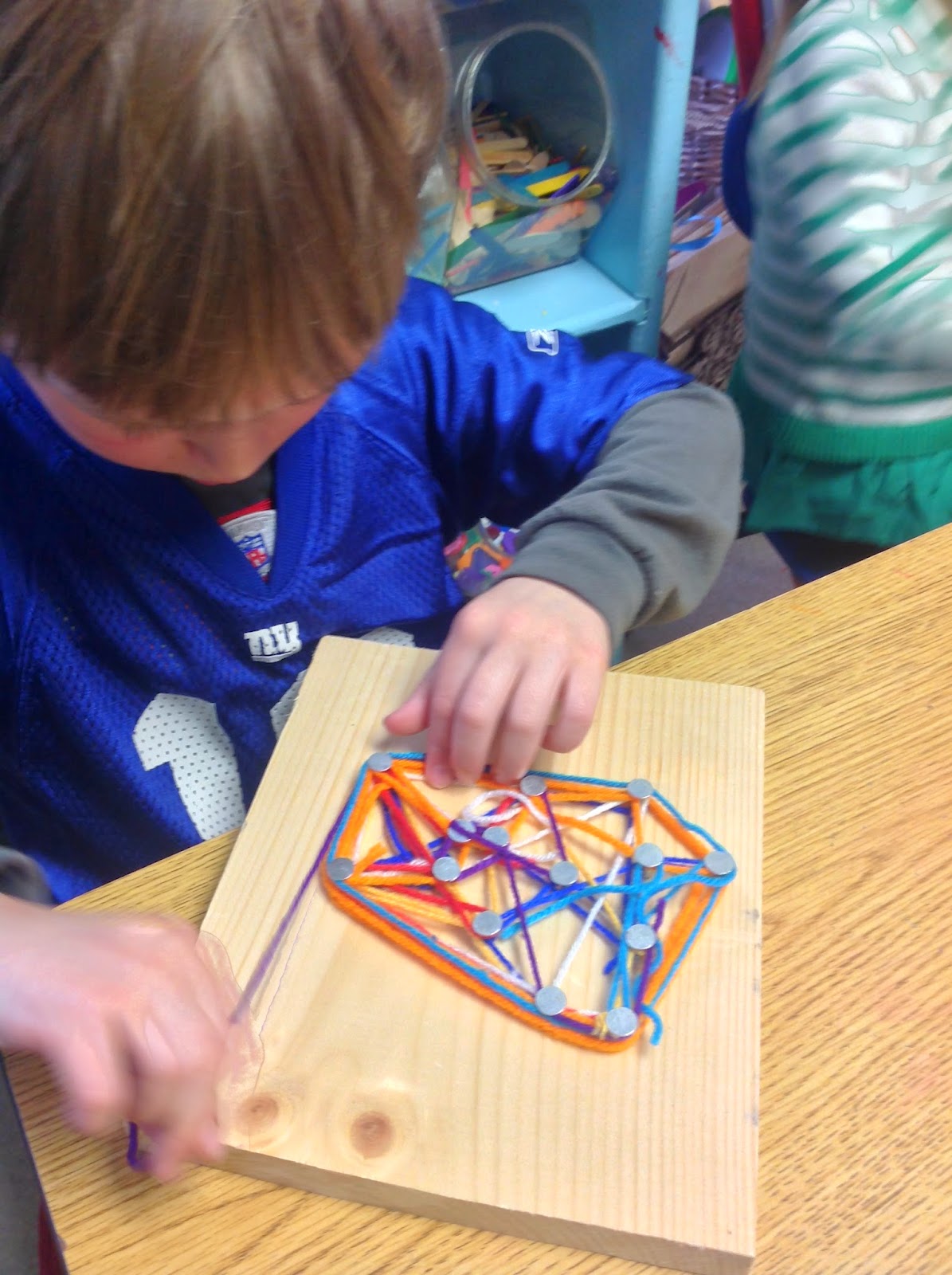The children chose how many nails to use and the design of the placement of the nails. They wore safety goggles from our workbench when hammering, but they did use real hammers.
We helped them learn the technique of holding the nail in place with the non hammering hand, hammering lightly to get the nail started and then moving it away before hitting much harder.
I know the question will be asked about children hurting themselves while using real tools. We do use tools fairly frequently in our class and have a workbench in the room at all times. There were just a few banged fingers and thumbs, but that is part of the learning involved in using a real hammer. These resilient children were more focused on finishing the job of getting the nails in the wood, so they would shake it off and start again, much the way I do when I still occasionally miss:-)
We had very different styles of accomplishing this project. Some children used a lot of nails and a lot of yarn, other had much more of a sparse approach.
This activity was left out for the week and several children chose to go back to their pieces and add more yarn or more nails as the week went on. This is one of the main reasons we leave centers for the week. Children need time to process an activity and try it again, add more, and deepen their experience. Some will only visit a center once, others will visit the same center each day for the week. Knowing they have the ability to return lets them feel relaxed as they are exploring it and not rushed to try everything in one day.
















